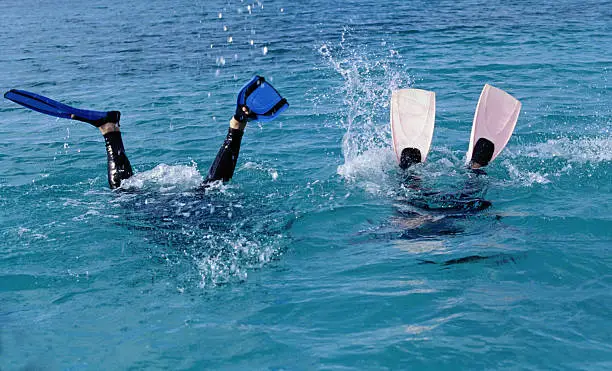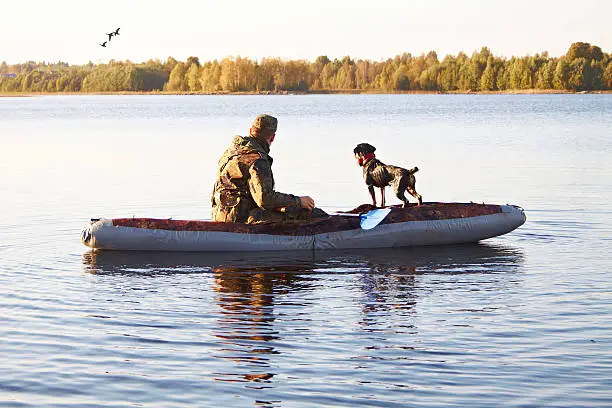Helpful Guides on each Category

Finding the best kayak trolling motor to use needs a lot of experimentation. With so many options on the market, it’s hard to know which one will best suit your needs and budget. Good news! We’ve tested and compiled a list of the best trolling motors for kayaks in 2023.
If you’re looking for the absolute best kayak trolling motor to buy, the Newport Vessels NK180 Kayak Trolling Motor is simply the one. I’ve tried many trolling motors, and the NK180 simply outperforms them all. It’s the quietest, smoothest, and most powerful motor I’ve ever used, and it’s made my kayak fishing trips so much more enjoyable.
A trolling motor is a compact electric motor designed specifically for kayaks. Unlike traditional boat motors, trolling motors are incredibly quiet, allowing you to approach fish without scaring them away. This is good for kayak fishing, where stealth and precision are key to success.
Powered by deep-cycle batteries, trolling motors provide a whisper-quiet propulsion system that allows you to:
- Maintain a consistent speed: Ideal for trolling techniques like lure fishing.
- Navigate tight spots and control your direction effortlessly.
- Stay put even in wind or current, perfect for jigging or dropping baits.
What are the Best Kayak Trolling Motors on the Market?

These are the top trolling motors for kayaks and they are available for you to purchase;
- Newport Vessels NK180 Kayak Trolling Motor
- Newport Vessels Kayak Series Electric Trolling Motor
- Watersnake T24 ASP Electric Trolling Motor
- Underwater Thruster 408w Brushless
1. Newport Vessels NK180 Kayak Trolling Motor (Full Kit)

The Newport Vessels NK180 Kayak Trolling Motor is a great choice for kayak anglers who are looking for a powerful, quiet, and durable motor. It is easy to install and use, and it is compatible with a variety of 24V batteries.
While it is on the heavier side and more expensive than some other options, the NK180 is a top-of-the-line motor that is sure to please even the most demanding kayak angler.
| Feature | Specification |
|---|---|
| Motor Type | Brushless |
| Voltage | 24V |
| Power Equivalent | 1.8hp |
| Shaft Length | 40″ |
| Speeds | 5 forward, 3 reverse |
| Steerable | Yes |
| Battery Compatibility | 24V Lithium, AGM, or Lead Acid Deep Cycle |
| Weight | 28 lbs |
Pros
- The brushless motor is incredibly quiet
- 1.8hp equivalent motor provides plenty of power for kayak fishing.
- Rugged construction and corrosion-resistant materials.
- Easy to install
- Compatible with many 24V batteries
- Comes with a 2-year warranty.
- Comes with many accessories including a battery box, prop cover, and transducer mount.
Cons
- At 28 lbs, the NK180 is one of the heavier trolling motors on the market.
- You will need to purchase a 24V battery separately.
- The NK180 is a bit more expensive because of its complete accessory pack.
2. Newport Vessels Kayak Series Electric Trolling Motor

The Newport Vessels Kayak Series 55lb Thrust Trolling Motor is a powerful and reliable option for saltwater kayak anglers. Its robust build, multiple speeds, and LED indicator make it a valuable tool for navigating choppy waters and reaching productive fishing spots.
While the weight and limited shaft length might be minor drawbacks for some, the overall performance and competitive price make me recommend it for serious kayakers.
| Feature | Specification |
|---|---|
| Thrust | 55 lbs |
| Shaft Length | 24 inches |
| Mount Type | Transom |
| Saltwater-resistant | Yes |
| Speeds | 5 forward, 3 reverse |
| Weight | 14.6 lbs |
Pros
- Handles strong currents and winds with ease.
- Built to withstand the harsh saltwater environment.
- Easy to install
- Offers precise control for various situations.
- Quiet operation
- Affordable
Cons
- Heavyweight (14.6 lbs)
- Limited shaft length is insufficient for deeper water or taller kayaks.
- No variable speed
3. Watersnake T24 ASP Electric Trolling Motor

The Watersnake T24 ASP is a versatile and affordable trolling motor ideal for kayak anglers who prioritize portability and performance in calm saltwater conditions. Its lightweight design, ease of use, and saltwater-resistant construction make it a valuable choice for exploring shallow waters and targeting smaller fish.
But its limited thrust and short shaft length might be limitations for some, the overall value and features make it a suitable option for casual saltwater fishing and budget-conscious anglers.
| Feature | Specification |
|---|---|
| Thrust | 24 lbs |
| Voltage | 12V |
| Saltwater-resistant | Yes |
| Weight | 4.85 lbs |
| Tiller Steering | Extendable |
| Speeds | 5 Forward, 3 Reverse |
| Mount Type | Transom |
| Compatibility | Universal |
Pros
- Lightweight
- Compact design Saves valuable space on your kayak.
- Built to last in harsh saltwater environments.
- Conserves battery life for longer fishing trips.
- Extendable tiller steering
- Variable speed settings
- Affordable
- Fits most kayaks and canoes.
Cons
- Has limited thrust not ideal for strong currents or larger kayaks.
- Short shaft length
- Not very fast
4. Underwater Thruster 408w

This underwater thruster is a powerful and versatile tool used for Kayak propulsion, Paddleboard assistance, Remote-controlled underwater exploration and Small boat propulsion.
This underwater thruster is a powerful and versatile tool that can enhance your experience on the water. It is ideal for kayakers, paddle boarders, underwater explorers, and anyone who wants to explore the possibilities of remote-controlled underwater propulsion.
| Feature | Specification |
|---|---|
| Voltage | 24V DC |
| Thrust | 7kg |
| Power | 408W |
| Motor Type | Brushless |
| ESC | 40A Waterproof |
| Remote Control | Included |
| Material | Stainless Steel & Plastic |
| Battery | 24V Deep Cycle (Not Included) |
Pros
- Powerful and efficient
- Easy to install and use
- Durable and corrosion-resistant
- Versatile for various applications
Cons
- Requires a 24V deep cycle battery (not included)
Considerations When Choosing a Trolling Motor
Size
Smaller kayaks require less thrust than larger ones. Consider the length and width of your kayak to determine the minimum thrust needed.
Weight Capacity
The weight of your kayak, fully loaded with gear and passengers, will impact the thrust required. A heavier kayak will need a more powerful motor.
Saltwater Or Freshwater?
Saltwater trolling motors require special features to resist corrosion and withstand harsh conditions. Look for models with stainless steel shafts and saltwater-resistant seals.
Freshwater motors don’t need the same level of corrosion resistance as saltwater models. However, you may still want to consider a model with a durable coating to protect it from the elements.
Thrust
Measured in pounds (lbs), thrust determines how powerful the motor is. A general rule is to have 2 lbs of thrust for every 100 lbs of boat weight. However, consider wind, current, and fishing style when making your choice.
Speed
Trolling motors come with various speed settings. Choose a model with enough speed range to suit your needs, whether it’s for slow trolling or covering long distances.
Battery Life
Battery size and type directly affect how long you can operate your trolling motor. Consider how long you typically fish and choose a battery that will last.
Power Consumption
Larger motors draw more power and require more battery capacity. Look for energy-efficient models to maximize your battery life.
Additional Features to look for
- GPS Integration
- Wireless Connectivity
- Variable Speed Setting
- Price
- Warranty
- Brand
How to Install a trolling motor on a kayak (Video)
Materials Needed
- Trolling motor
- Mounting bracket (specific to your kayak model)
- Drill (with appropriate drill bits)
- Screwdriver
- Wrench
- Zip ties
- Marine sealant
- Pliers
- Wire cutters/strippers (if needed)
STEP 1. Determine the mounting location
- The most common location is the transom (rear) of the kayak.
- Consider factors like weight distribution, steering control, and legroom.
- Mark the drilling locations for the mounting bracket.
STEP 2. Drill the mounting holes
- Use a drill bit slightly smaller than the mounting bracket screws.
- Apply marine sealant to the holes to prevent corrosion.
- Attach the mounting bracket to the kayak using the screws and a wrench.
STEP 3. Install the trolling motor
- Slide the motor shaft into the mounting bracket.
- Secure it with the provided clamp or bolts.
- Connect the battery cables to the motor’s positive and negative terminals.
- Secure the cables with zip ties to prevent them from getting tangled or damaged.
STEP 4. Install the control unit
- The control unit can be mounted on the kayak’s deck or side.
- Follow the manufacturer’s instructions for mounting and wiring.
- Connect the control cable to the motor.
STEP 5. Test the motor
- Make sure the battery is fully charged.
- Turn on the motor and test the controls.
- Adjust the settings as needed.
How to Maintain and fix a Kayak Trolling Motor
- Regularly clean and lubricate the motor shaft.
- Inspect the battery connections and cables for damage.
- Store the motor and battery in a cool, dry place.
- Charge the battery fully before each use.
- If the motor doesn’t turn on, check the battery connections, fuse, and circuit breaker.
- If the motor is loud or vibrating excessively, it may need lubrication or repair.
- Always consult the manufacturer’s manual for specific maintenance and troubleshooting instructions.
Types of Kayak Trolling Motor
Transom Mount
A transom mount trolling motor is the most common type. It is mounted on the transom (the back) of the boat.
- Easy to install and remove
- More affordable than other types of trolling motors
- A good option for small boats
- Less precise control than bow mount motors
- Can interfere with other activities, such as fishing or swimming
Bow Mount
A bow mount trolling motor is mounted on the bow (the front) of the boat.
- More precise control than transom mount motors
- Better for navigating tight spaces and windy conditions
- Allows for more versatile fishing techniques
- More expensive than transom mount motors
- Can be more difficult to install and remove
- Takes up more deck space
Engine-Mounted
An engine-mounted trolling motor is mounted directly to the outboard motor.
- Saves space on the boat
- Easier to install than other types of trolling motors
- Not as powerful as other types of trolling motors
- Can be damaged by the outboard motor
Pontoon mount
These motors are mounted on the pontoons of a pontoon boat.
Saltwater motors
These motors are designed to resist corrosion from saltwater.
E-drive motors
These motors are quieter and more energy efficient than traditional trolling motors.
Benefits of using a trolling motor for kayaks
- Travel farther and explore more fishing spots in less time.
- Reach previously inaccessible areas, like deeper water or strong currents.
- Cover greater distances without expending energy paddling, allowing you to conserve strength for fishing.
- Maintain position over desirable fishing spots.
- Allows for hands-free fishing, maximizing focus and technique.
- Employ various fishing techniques, including trolling, jigging, and drift fishing.
- Preserve energy for fishing and avoid fatigue from constant paddling.
- Allows older anglers or those with limited mobility to enjoy kayak fishing.
- Allows for quieter operation compared to paddle propulsion.




